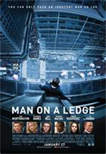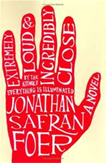Making Good Stories
What makes good stories? Good conflict. Conflict is the catalyst that gets the story going and the engine that drives it. If I were to tell you, “I ate an apple.” You probably wouldn’t care. If I said, “I just ate the last apple.” Now there is some conflict and you have a reason to care.
When deciding what movie to watch, you probably read the ‘log line’ or one line description of a movie to see what it’s about. A good log line and title will sell you on a movie. The log line lays out the central conflict of the movie.
Here’s a few current/popular movies and books. Pay attention to the conflict each story has.
Movies |
Books |
|
Man on a Ledge |
War and Peace |
|
Beauty and the Beast |
The Help |
|
The War Horse |
Extremely Loud & Incredibly Close |
Having good stories in a portfolio is paramount. Next you'll want to atract attention to your story by quickly telling what it is about. You can do this with an image or words. You want to be a board artist? You need to know how to tell a story with images!
One of my all time favorite movies is The Incredibles. It’s central conflict is this:
Fantastic vs Mundane
To be more specific:
Super Heroes vs Normal People
Refine a bit more:
Super hero is forced to live as a normal person
or
Family with super powers must hide their abilities from the world.
The Incredibles is not a movie about super heroes, it’s a movie about a family who happen to be super heroes. It contrasts how mundane family life can be with how fantastic family life can be. Great on so many levels
When coming up with your own stories you should start out with a log line of your conflict. Now it’s your turn to come up with a good log line that will sell your story to potential employers.
I like to start by brainstorming ideas for a story. First, come up with some conflicting Ideas:
- Sleepy/Awake
- Fast/Slow
- Angry/Happy
Now start adding layers to these opposites:
Sleepy/Awake
Narcoleptic race car driver.
Student trying to stay awake for finals after a night of cramming.
Fast/Slow
Fast talking speech therapist
Worm and bird
Happy/Angry
Happy prisoner, Angry guard
Depressed clown
A storyboard artist job is to enhance the conflict in everything you work on. How are you going to make it better? Enough writing, let’s do this visually!
Pick the conflict that excites you the most.
Fast/Slow -- bird vs worm
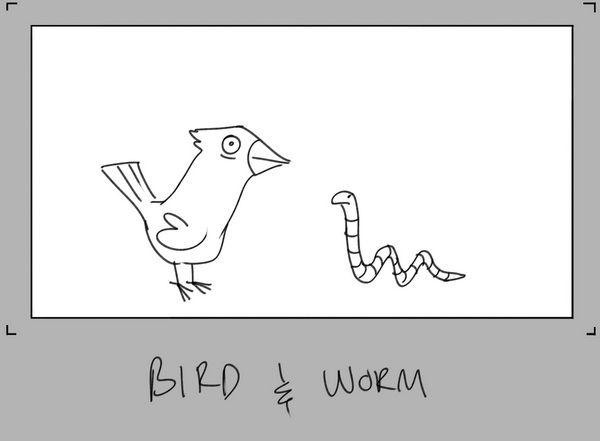
Now draw a more extreme picture. We need some CONFLICT!!
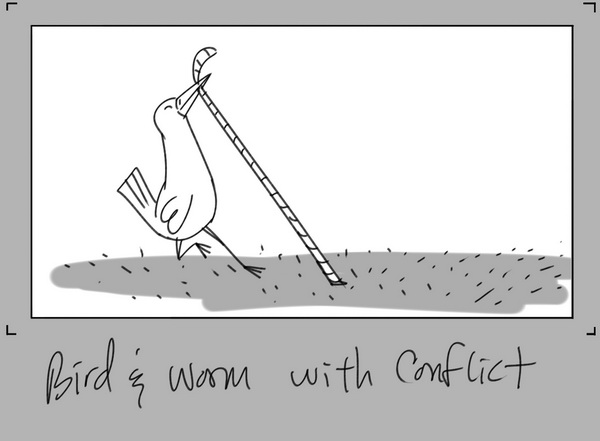
Can you build on this even more? What if…
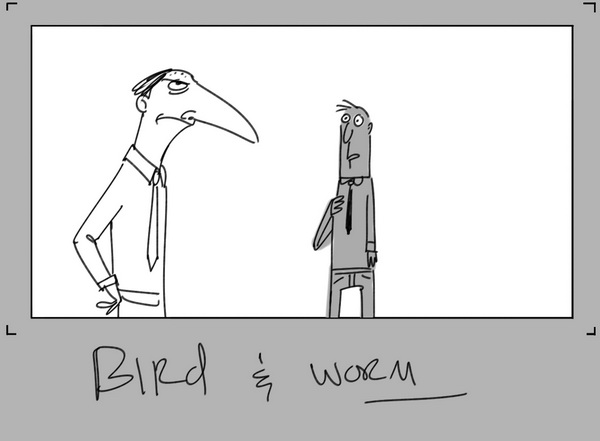
This is where good storyboard artistry really comes to the rescue. Use visual images to make the written word better. After all, "a picture is worth a thousand words." Now let's go even further:
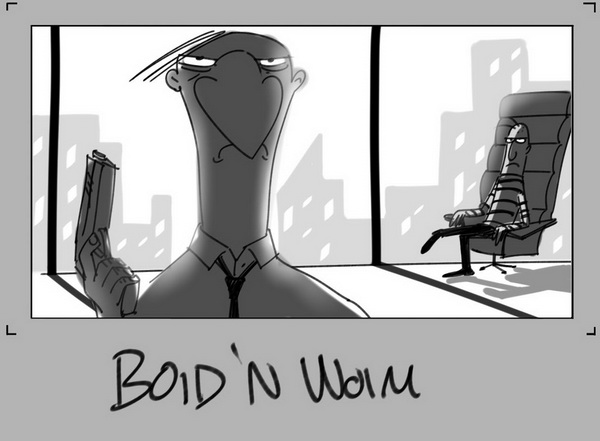
VOILÀ! Boid n Woim - the city's most feared hitmen. Now lets add a log line:
Boid and Worm New York's toughest hit men just recieved their toughest contract -- each other!
STORY STRUCTURE
Think of story structure as achitecture. Generaly you don't mix different types of structures, if you do you'll get a mutt. Not every pretty.
Feature films use the three act structure:
Hero with a problem.
Hero sets out to solve problem and finds a bigger problem
Hero solves problem in unexpected way and learns something new
This is also called, the heroes journey. Since you probably won’t be submitting a fully boarded feature in your portfolio we’ll focus on structure for shorter stories.
Short subjects can follow a condensed three act structure but they generally don’t have a heroes journey or character arc. The main character remains the same throughout the story. Pixar’s Presto is a good example of this.
Rabbit denied carrot by magician.
Rabbit won’t cooperate with magician.
Comedy ensues, gags escalate.
Rabbit saves Magician, gets carrot.
The rabbit doesn’t really learn a lesson or have a character arc, he just wants the carrot. In the end he gets it.
The Expanded Gag structure:
Set up a conflict
Throw several solutions/gags at it
Resolve in an unexpected way
This is a classic set up/payoff gag that has been drawn out. You might even throw in a reversal. Spy vs Spy from Mad Magazine is a good example of this structure. I also use this structure for Yeti vs Gnome. You could have the main character in this structure learn something.
All the Bugs Bunny and Road Runner cartoons don’t have character arcs. The characters remain the same throughout and that is where the comedy comes from.
The Road Runner cartoon have the Always reaching, Never achieving structure:
Coyote wants to eat road runner
He tries various ideas to get road runner
Each idea builds on the last
He almost get or does get the road runner
Coyote outsmarts himself and loses the road runner.
We followed that structure with the Scrat and Nut in Ice Age. The Scrat can never get the nut. It’s the Always reaching, Never achieving that make the character so likeable.
My friend Bob Camp of Ren & Stimpy fame said this: ‘Have a good set up with an ironic ending.’
Be careful not to mix up these different structures. If the road runner got the coyote it wouldn’t be funny. If he learned something it wouldn’t work.
Write three conflicts. Build on them by drawing a few images for each and writing a log line. Pick your favorite conflict and a structure that best fit your conflict. Board it out, keep it short.
If you are having trouble coming up with conflicts, use the conflicts from this lesson and build on it.
